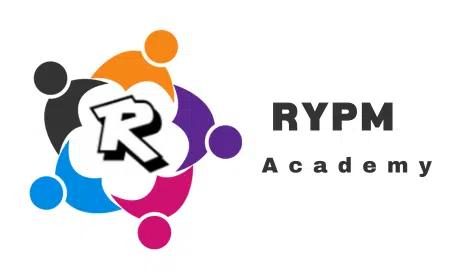The Kano Model: Understanding Customer Needs and Expectations
The Kano Model is a valuable tool for understanding and categorizing customer needs and expectations. It was developed by Professor Noriaki Kano in the 1980s and has since been widely used in various industries to improve product and service offerings.
Understanding the Kano Model
The Kano Model categorizes customer needs into five different types: basic, performance, excitement, indifferent, and reverse. Each type represents a different level of impact on customer satisfaction and can help businesses prioritize their efforts to meet customer expectations.
1. Basic Needs
Basic needs are the fundamental requirements that customers expect to be fulfilled. These needs are considered essential and their absence can lead to extreme dissatisfaction. In the manufacturing domain, for example, basic needs could include product reliability, durability, and safety. Customers in the manufacturing industry expect products that meet quality standards and perform their intended functions without any issues.
In the information technology (IT) domain, basic needs could include system stability, security, and ease of use. Customers expect IT solutions that are reliable, secure, and user-friendly. Failure to meet these basic needs can result in frustration and a loss of trust in the product or service.
In the finance domain, basic needs could include accurate and timely financial information, secure transactions, and reliable customer support. Customers expect financial institutions to provide accurate account statements, secure online banking platforms, and responsive customer service. Failing to meet these basic needs can lead to dissatisfaction and a loss of confidence in the financial institution.
2. Performance Needs
Performance needs are the features and attributes that directly impact customer satisfaction. These needs are directly related to the performance of the product or service and meeting them can lead to increased customer loyalty. In the manufacturing domain, performance needs could include product speed, efficiency, and customization options. Customers may value products that are faster, more efficient, and can be tailored to their specific requirements.
In the IT domain, performance needs could include software speed, functionality, and integration capabilities. Customers expect IT solutions that are fast, offer a wide range of features, and can seamlessly integrate with other systems. Meeting these performance needs can result in increased customer satisfaction and a competitive advantage.
In the finance domain, performance needs could include competitive interest rates, flexible account options, and efficient transaction processing. Customers value financial institutions that offer attractive interest rates, a variety of account options, and quick transaction processing. Meeting these performance needs can help financial institutions attract and retain customers.
3. Excitement Needs
Excitement needs are the unexpected features or attributes that can delight customers and exceed their expectations. These needs are not considered essential, but their presence can lead to a positive emotional response and increased customer loyalty. In the manufacturing domain, excitement needs could include innovative design, advanced features, and unique packaging. Customers may be delighted by products that have a sleek and modern design, offer cutting-edge features, or come in attractive packaging.
In the IT domain, excitement needs could include AI-powered capabilities, intuitive user interfaces, and personalized recommendations. Customers may be excited by IT solutions that leverage artificial intelligence, have user-friendly interfaces, and provide personalized recommendations based on their preferences. Meeting these excitement needs can differentiate IT companies from their competitors and create a sense of delight among customers.
In the finance domain, excitement needs could include personalized financial advice, innovative digital tools, and exclusive rewards programs. Customers may be thrilled by financial institutions that offer personalized financial advice tailored to their goals, innovative digital tools for managing their finances, and exclusive rewards programs. Meeting these excitement needs can help financial institutions stand out in a crowded market and build strong customer relationships.
4. Indifferent Needs
Indifferent needs are the features or attributes that do not significantly impact customer satisfaction. Customers are neither satisfied nor dissatisfied by the presence or absence of these needs. In the manufacturing domain, indifferent needs could include certain product aesthetics or minor packaging details. Customers may not have strong preferences or expectations regarding these features.
In the IT domain, indifferent needs could include specific customization options or certain software functionalities that are rarely used. Customers may not attach much importance to these features and their presence or absence does not significantly affect their satisfaction.
In the finance domain, indifferent needs could include minor account features or specific branch locations. Customers may not have strong preferences or expectations regarding these features and their presence or absence does not significantly impact their satisfaction.
5. Reverse Needs
Reverse needs are the features or attributes that, when present, can lead to customer dissatisfaction. These needs are considered undesirable or unwanted by customers. In the manufacturing domain, reverse needs could include complex product assembly or excessive packaging. Customers may find these features unnecessary or inconvenient.
In the IT domain, reverse needs could include intrusive advertisements or excessive system requirements. Customers may be annoyed by intrusive advertisements that disrupt their user experience or by software that requires high system resources.
In the finance domain, reverse needs could include hidden fees or poor customer service. Customers may be frustrated by hidden fees that they were not aware of or by unresponsive customer service representatives.
Conclusion
The Kano Model provides businesses with a framework for understanding and categorizing customer needs and expectations. By identifying and prioritizing these needs, businesses can focus their efforts on delivering products and services that meet or exceed customer expectations. Whether in the manufacturing, information technology, or finance domain, understanding the different types of customer needs can help businesses gain a competitive advantage and build strong customer relationships.


Recent Comments